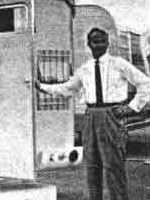ANDREW (actually, anyone): What do you think of the AirLiner shape, aerodynamically speaking?
A square back would make for easy entry to the kitchen area (still using a typcial t/d layout), and a double door and roof extension would give sun and weather protection if opened at a 90 degree angle.. kind of a 'walk-in' kitchen area..
Aerodynamics Page Andrew?
6 posts
• Page 1 of 1
-

Arne - Mr. Subject Line
- Posts: 5383
- Images: 96
- Joined: Fri Aug 13, 2004 12:25 pm
- Location: Middletown, CT
Arne wrote:ANDREW (actually, anyone): What do you think of the AirLiner shape, aerodynamically speaking?
A square back would make for easy entry to the kitchen area (still using a typcial t/d layout), and a double door and roof extension would give sun and weather protection if opened at a 90 degree angle.. kind of a 'walk-in' kitchen area..
Andrew,
Sounds like you ought to put some of your aero-dynamic thoughts on one of your pages over there in your design library!!!

Mike...
The quality is remembered long after the price is forgotten, so build your teardrop with the best materials...
-

mikeschn - Site Admin
- Posts: 19202
- Images: 475
- Joined: Tue Apr 13, 2004 11:01 am
- Location: MI

